
On August 15, 2022, the Cosmic Evolution Early Release Science Survey (CEERS) announced the first group of observations from the James Webb Space Telescope. The four panels above make up the largest image of galaxies that Webb has taken so far. Webb’s NIRCam, or Near Infrared Camera, created this mosaic that consists of 690 frames. Incredibly, this mosaic covers eight times as much sky as the initial Deep-Field Image from July 12. With this in mind, let’s take a closer look at some of the amazing galaxies that dwell within this image.
You can download the high-resolution image filled with galaxies from the CEERS website, and when they say it’s huge, they’re not kidding. But, if you do take the time to download the 255 MB tif file to your computer, you’ll be able to zoom in and in and in on the galaxies of your choice.
Webb’s largest image of galaxies
This first group of images contains four of the 10 planned images. NIRCam took the first four in June 2022 and will take the rest in December. These images come from a small patch of sky near the handle of the Big Dipper.
The six images selected here include:
1) A spiral galaxy at a redshift of z=0.16. You can see many blue, star-forming clumps and star clusters.
2) A chance alignment of a bright galaxy at a redshift z=2 with several smaller galaxies, forming an arc in the sky.
3) An interacting system of galaxies at z=1.4, dubbed the Space Kraken by the CEERS team.
4) Two interacting spiral galaxies at z=0.7. The arrow points to a supernova discovered with these images.
5) Another spiral galaxy, also at z=0.7, showing small-scale features.
6) A chance alignment of a z=0.63 galaxy with a tidal tail, and a grouping of red galaxies at z=1.85.

Galaxy in Inset 1
Team member Rebecca Larson had some fun explaining each of these targets on her Twitter page. Indeed, about the galaxy in image one, Rebecca said:
I’ll start with this beautiful blue spiral of a galaxy that everyone who had the chance to look over my shoulder while I was putting this together pointed at and said ‘Oooh, pretty!’ This galaxy is at a redshift of z = 0.16 and those clumps are little pockets of stars forming!
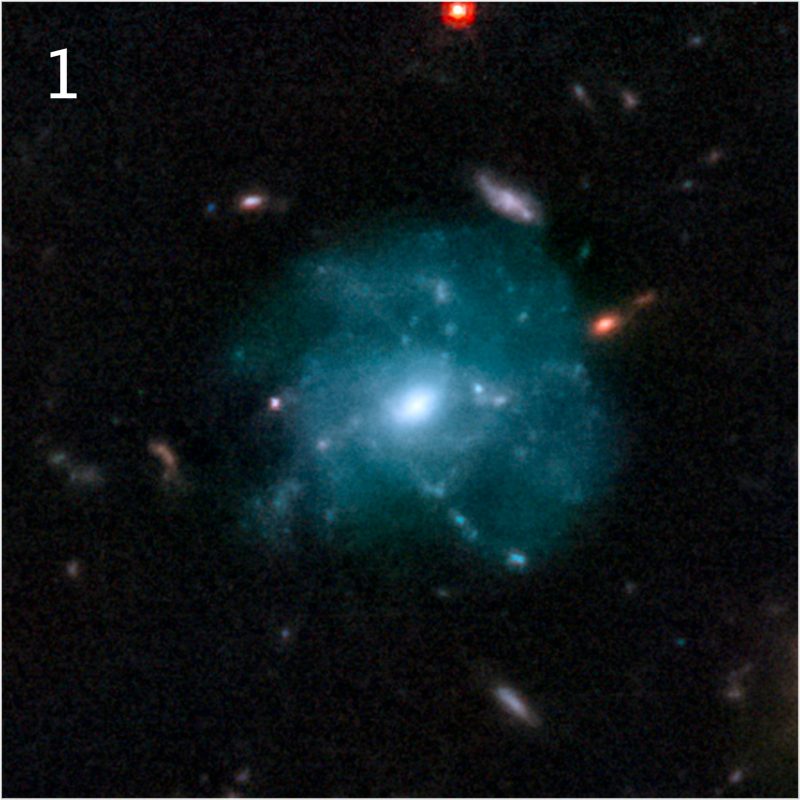
Galaxies in Inset 2
Likewise, about the second inset, Rebecca said:
Throwback Thursday to one late night when I decided this galaxy on the left (an elliptical galaxy at redshift z=1.05) looked like Pac-Man and proceeded to overlay the little yellow dude and laughed so hard we all decided it was time to go home.
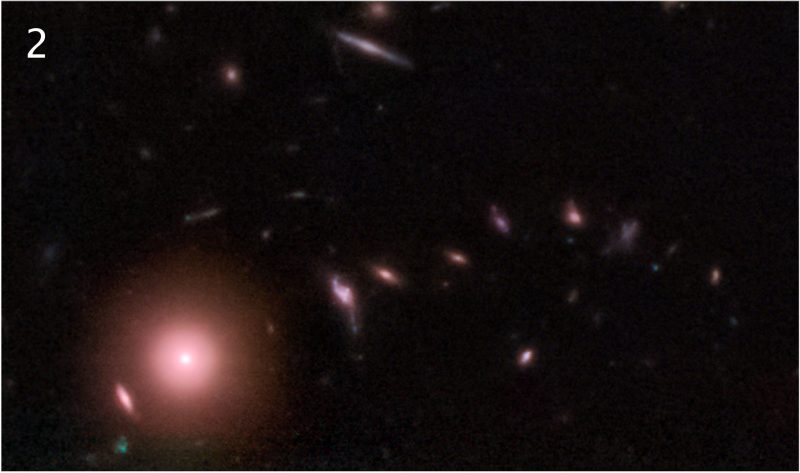
Galaxies in Inset 3
About this collection of galaxies, Rebecca tweeted:
Of course the Space Kraken!!! Which is an interacting set of galaxies at redshift z=1.4, over 9 billion light-years away (so it probably won’t eat us … probably)! Shoutout to @astrosteven for the naming of this one (blame him if it comes for us … which it won’t … probably).
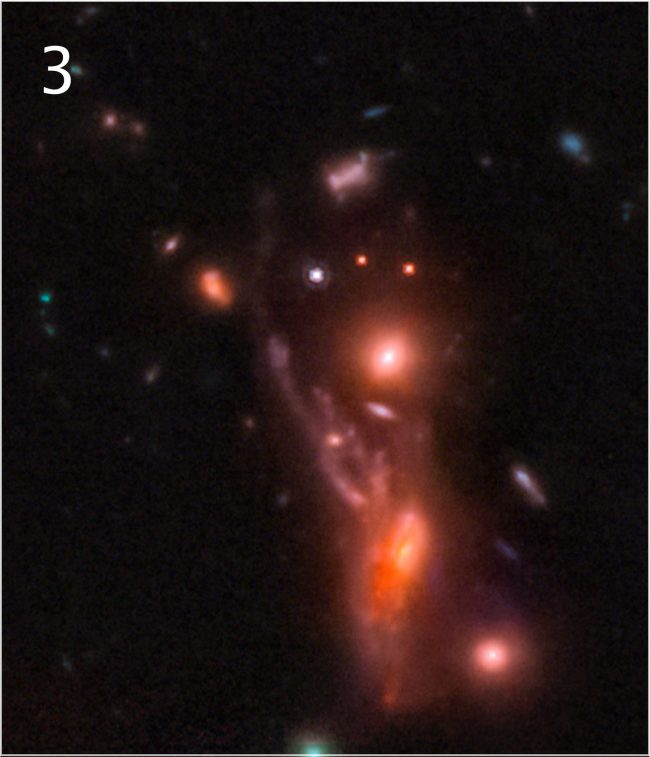
Galaxies in Inset 4
Is this the first supernova discovery with Webb? Check out this video comparing the Hubble image without the bright point of light with Webb’s image. Rebecca said:
This chaos is a set of interacting galaxies at redshift z=0.7, which also hosts the first potential supernova detection with #JWST (arrow) noticed just a day after the data was released!
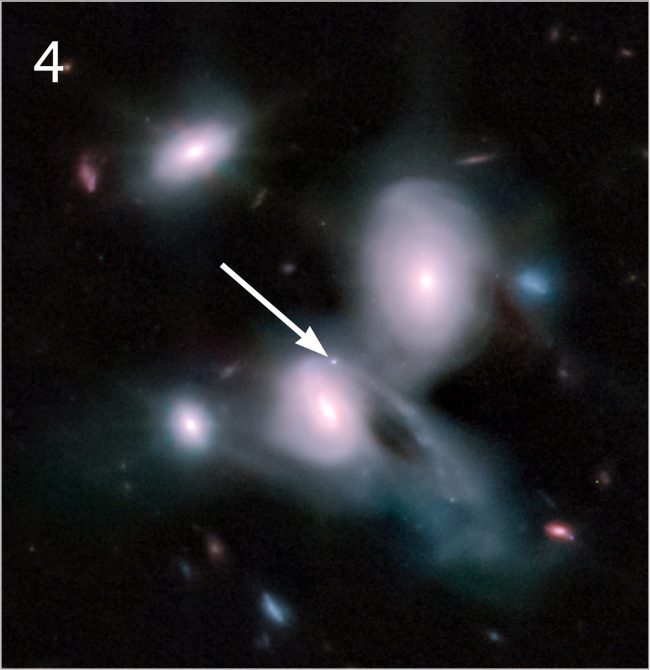
Galaxies in Inset 5
This gorgeous spiral galaxy has smaller, background galaxies that appear to be climbing all over it like fleas. Rebecca said:
I had such a hard time picking out specific galaxies in our image to showcase, but I kept coming back to this spiral because of the insane amount of detail we’re capturing with #JWST in galaxies this distant. This galaxy is at redshift z=0.7, about 6.4 billion light-years away!
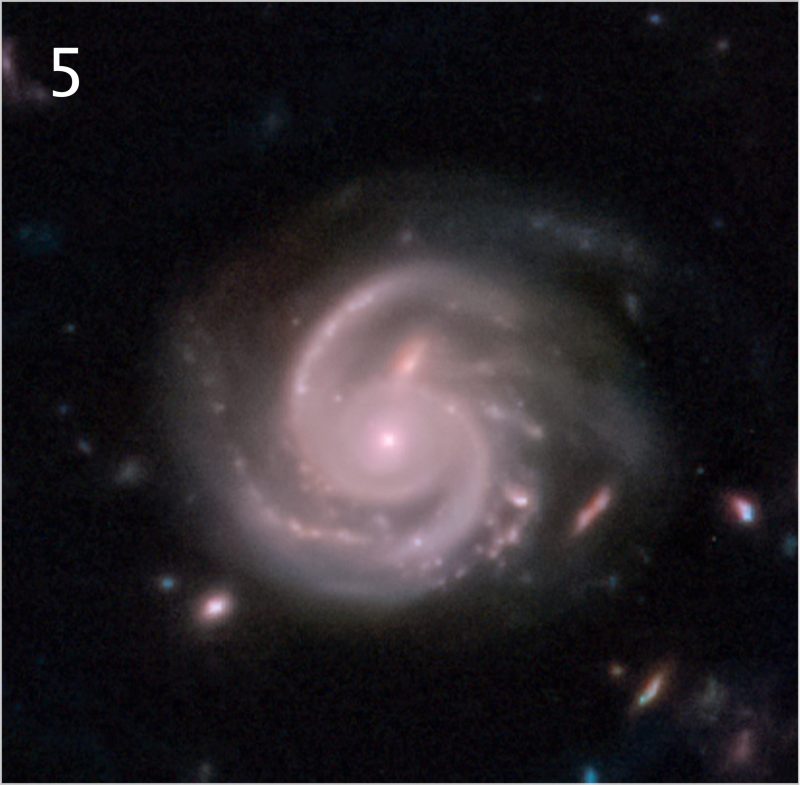
Galaxies in Inset 6
Meanwhile, in this image, we see detailed structure of a merging pair of galaxies. Rebecca said:
I tried to call this feature a ‘hot mess of space,’ but the press people said ‘no.’ The tidal tail at the top, the merging galaxies at the bottom … which you might recognize from an earlier comparison to our @NASAHubble images.
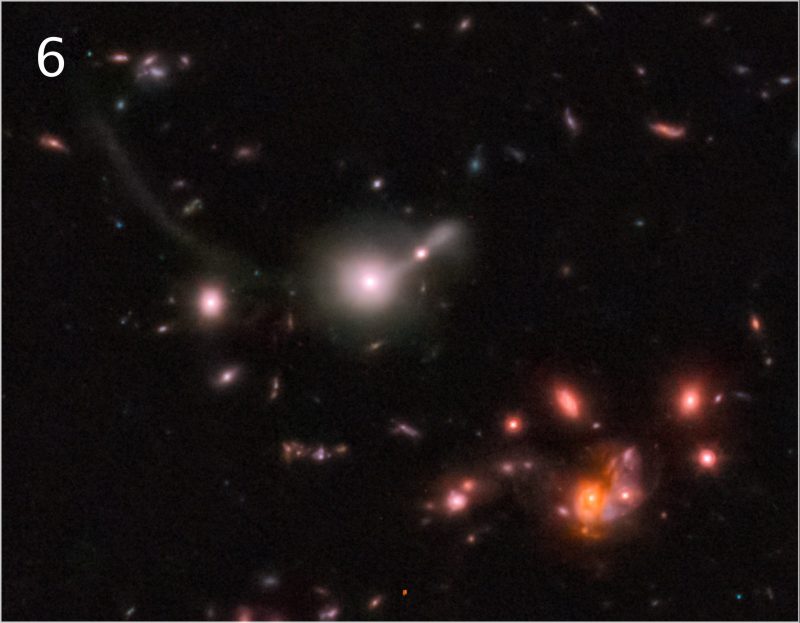
Maisie’s Galaxy
The new mosaic also shows you where Maisie’s Galaxy lies. You may remember this delightfully named galaxy in an earlier story of ours. Team member Steve Finkelstein named this galaxy after his daughter, Maisie. Moreover, they actually discovered the galaxy on Maisie’s birthday!
Maisie’s Galaxy may be one of the earliest galaxies we’ve ever observed. In fact, scientists believe Maisie’s Galaxy has a redshift greater than 11.8. So, if future observations confirm this, it would mean we’re seeing this galaxy as it was less than 400 million years after the Big Bang.
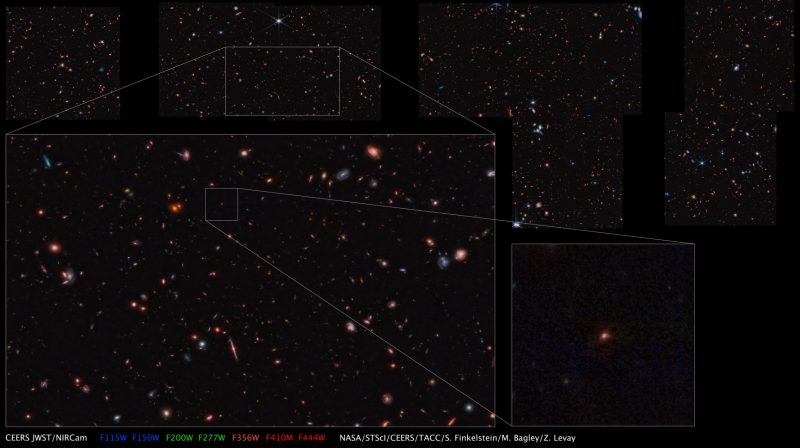
The Skittles image
In addition to the images that Webb took with its NIRCam, here’s an image from a different instrument, MIRI, the Mid-Infrared Instrument. In this case, the team has dubbed this image Skittles, and one look will tell you why.

Bottom line: Webb has taken the largest image of galaxies yet. The newest release covers eight times as much space as its original deep-field image.











